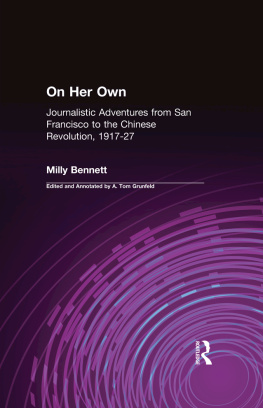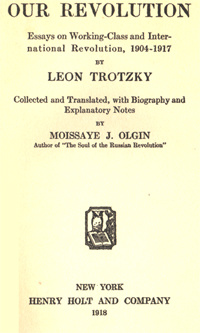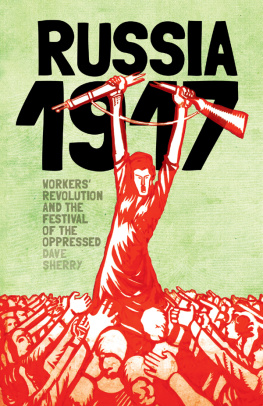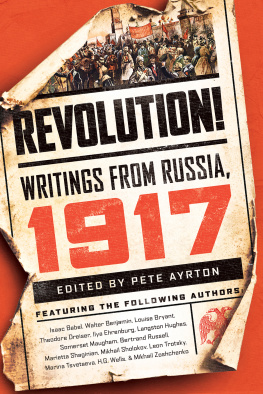First published 1993 by M.E. Sharpe
Published 2015 by Routledge
2 Park Square, Milton Park, Abingdon, Oxon OX14 4RN
711 Third Avenue, New York, NY 10017, USA
Routledge is an imprint of the Taylor & Francis Group, an informa business
Copyright 1993 Taylor & Francis. All rights reserved.
No part of this book may be reprinted or reproduced or utilised in any form or by any electronic, mechanical, or other means, now known or hereafter invented, including photocopying and recording, or in any information storage or retrieval system, without permission in writing from the publishers.
Notices
No responsibility is assumed by the publisher for any injury and/or damage to persons or property as a matter of products liability, negligence or otherwise, or from any use of operation of any methods, products, instructions or ideas contained in the material herein.
Practitioners and researchers must always rely on their own experience and knowledge in evaluating and using any information, methods, compounds, or experiments described herein. In using such information or methods they should be mindful of their own safety and the safety of others, including parties for whom they have a professional responsibility.
Product or corporate names may be trademarks or registered trademarks, and are used only for identification and explanation without intent to infringe.
Library of Congress Cataloging-in-Publication Data
On her own: journalistic adventures from San Francisco to the
Chinese Revolution, 19171927 / Milly Bennett: edited and
annotated by A. Tom Grunfeld.
p. cm.
Includes index.
ISBN 0-87332-523-0 (c); ISBN 1-56324-182-X (pbk.)
1. Bennett, Milly, 18971960. 2. Women journalistsUnited States
20th centuryBiography. 3. Women journalistsChina20th century
Biography. 4. ChinaPolitics and government19121949.
I. Grunfeld, A. Tom
II. Title.
PN4874.B424A3 1992
070'.92'273dc20
92-39241
CIP
ISBN 13: 9781563241826 (pbk)
ISBN 13: 9780873325233 (hbk)
Authors Dedication
For my husband Hans Amlie, who fought in Spain against the brutalitarian [ sic ] forces of Europe and for the liberty of the Spanish people and is home with meand for my friends Robert Hale Merriman, Harry Hynes, Wallace F. Burton, Philip Detro, Dave Doran, and two thousand more Americans who fought in Spain for the liberty of the Spanish people and will never come home.
Editors Dedication
To Alice's patience, encouragement, and faith in my abilities in the early years, without which I could not have taken on this project.
I WILL not soon forget the year 1989. As the dramatic events in China unfolded, escalating from peaceful demonstrations to massive protests to the declaration of martial law and finally the shooting of students and workers, I experienced a growing sense of dj vu. There I was sitting in my living room in New York City watching these events through the eyesand camerasof foreign journalists while simultaneously working on this manuscript, which, through the eyes of another foreign journalist, allowed me to view a China in 1927 when students and workers in Hankow joined together to struggle for a more just and democratic nation. In Hankow in 1927, as in Peking in 1989, military forces declared martial law and shot protesters in cold blood.
These events are more than merely coincidental, for both, though separated by sixty-two years, are linked to China's continuing struggle for independence, justice, and democracy throughout this century. These events can be seen along a continuum, as an ongoing search for an acceptable form of government to replace dynastic rule. The search began with the fall of the Ch'ing dynasty in 1911 and has not yet been fully realized despite the social advances the Communist revolution has achieved since 1949.
This book, I believe, will aid in placing the current events in China into a broader historical context. Nominally, this is an autobiography of a remarkable woman and her brief time in China. But it goes beyond the narration of an individual's life by contributing an extraordinarily detailed look at a period of great instability as well as exploring the sensitive topic of the involvement of foreigners in the internal politics of China.
In 1911 the Ch'ing dynasty collapsed, taking with it a system of government that had survived two millennia. In addition to a loss of political structure, China faced a cultural vacuum as well, for Confucianism had proven incapable of adapting to the twentieth century.
Out of this political, educational, social, and cultural vacuum came chaos. Administratively, for example, China broke up into regional zones governed by warlords, most of whom were rapacious in their treatment of the people they dominated. To fill these vacuums, Chinese intellectuals searched for alternatives and experimented with a host of ideas, organizations, and political ideologies.
Sun Yat-sen, the Western-trained medical doctor turned revolutionary, had finally succeeded in bringing down the imperial system but was having difficulty introducing an alternative republican form of government. His overtures for aid were rebuffed by the United States and Britain but welcomed in Moscow where the newly established Soviet government promised aid and advisers.
Meanwhile, in Shanghai, the Chinese Communist party (CCP) had been established in July 1921 with the assistance of the Soviet Union. It was in opposition to Dr. Sun's Kuomintang (KMT), or Nationalist party. But now, in spite of considerable opposition from within the ranks of the Chinese Communists, Moscow forced a uniona united frontwhereby individual Communists would join the KMT while retaining their membership in the CCP. The Soviets believed the CCP too weak to achieve power by itself. This united front began in 1924, and the goal was to create an army and a political force that would move north out of Canton to overcome the warlords and unite China under one strong, central republican government.
But before this goal could be realized, Dr. Sun died on March 12, 1925, leaving a power struggle over his succession that pitted the political right under Chiang Kai-shek against those on the political left, such as Sun's widow Soong Ching-ling, Eugene Chen, the Soviet advisers, and, for a time, Wang Ching-wei.
To realize Sun's ambitions, his followers established the Nationalist Government of China on July 1, 1925, followed by the founding of the National Revolutionary Army, with Chiang Kai-shek as commander-in-chief, a year later on June 5, 1926. In addition, the decision was made to launch the Northern Expedition.
The Nationalists had eight armies totaling 100,000 men against the warlords Chang Tso-lin, Wu P'ei-fu, and Sun Ch'uan-fang, whose armies numbered over 500,000.












